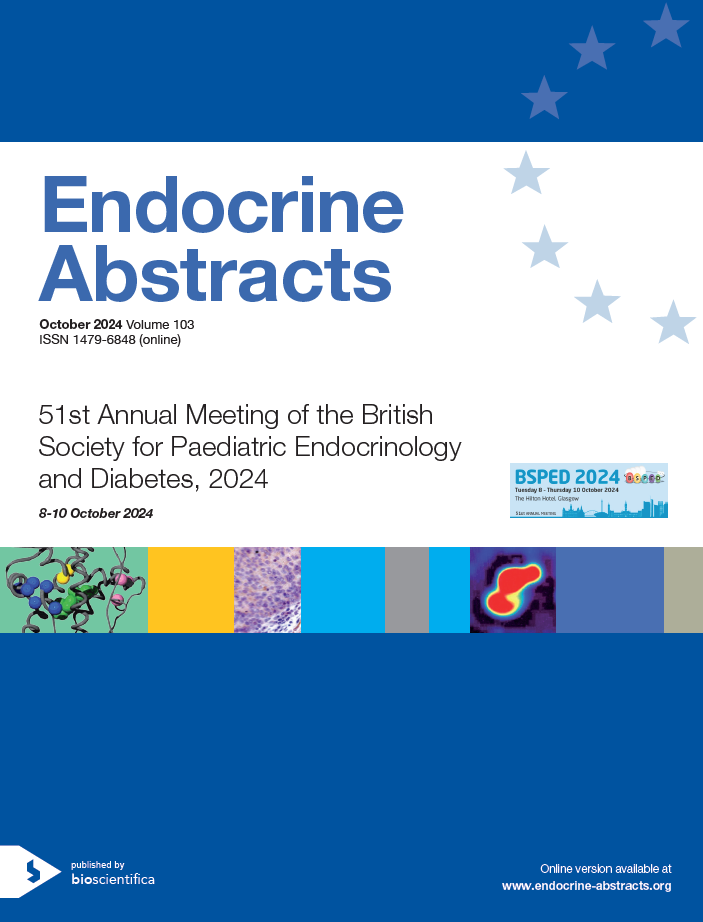
51st Annual Meeting of the British Society for Paediatric Endocrinology and Diabetes
Glasgow,
UK
08 Oct 2024 - 10 Oct 2024

Poster Presentations
Diabetes 6
ea0103p99 | Diabetes 6 | BSPED2024
Type 1 diabetes and glut1 transporter deficiency syndrome: a case report
Ali Salma , Symonds Joseph , Whyte Karen
ea0103p100 | Diabetes 6 | BSPED2024
Werner syndrome – a rare presentation with acanthosis nigricans
Manwani Bharkha , Prasad Rathi , Brungs Rosemary
ea0103p101 | Diabetes 6 | BSPED2024
An analysis of the presence of vascular complications from type 1 diabetes mellitus based on ethnicity and deprivation quintile in a single centre
Andrews Afiya , Balagamage Chamila , Kershaw Melanie , Mohammed Zainab , Idkowiak Jan , Uday Suma , Saraff Vrinda , Drummond Lesley , Krone Ruth , Dias Renuka. P.
ea0103p102 | Diabetes 6 | BSPED2024
Pizza party socials for young people with diabetes and their families to promote peer support and education
Dublon Victoria , Didarally Olga , Green Steve , Hama Zilan , Burcham Melanie , Ambridge Jade , Chowdrey Safa
ea0103p103 | Diabetes 6 | BSPED2024
Understanding paediatric DKA risk at university hospital bristol NHS foundation trust
ea0103p104 | Diabetes 6 | BSPED2024
Identifying barriers to technology use in children and young people (CYP) with type 1 diabetes
Mohamed Haniffa Fathima , Abdi Marian , Hudson Liz , Ayya Mekhala , Bandhakavi Meenakashi
ea0103p105 | Diabetes 6 | BSPED2024
Outcomes from hybrid closed-loop therapy in children and young people with type 1 diabetes at leeds children’s hospital
Tattersall Alexander , Stephenson Tracey , Campbell Fiona
ea0103p106 | Diabetes 6 | BSPED2024
Searching for hidden MODY in a paediatric diabetes clinic – a clinical review
Fozi Anis , Jeevarathnami Dhivyalakshmi , Sachdev Pooja , Williams Rachel



